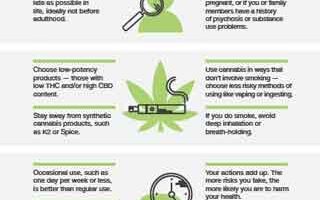Title: The Green Dilemma: Navigating the Myths and Realities of Cannabis Toxicity
Introduction:
In the sprawling landscape of cannabis culture, where the benefits of the plant are celebrated and its popularity continues to rise, one question often lingers in the shadows: How much weed is too much? While stories of euphoric highs and therapeutic relief abound, the whispers of danger can become obscured amidst the haze. As society edges closer to broader acceptance and legalization of marijuana, it’s essential to untangle the threads of myth from the fabric of fact regarding its potential lethality. This article seeks to shed light on a topic that is as complex as it is critical—exploring the parameters of cannabis use, examining the science behind its toxicity, and addressing the age-old concern of whether it is possible to consume enough marijuana to pose a fatal risk. Here, we embark on a quest for understanding, arming ourselves with knowledge to make informed choices in the evolving landscape of cannabis consumption.
Table of Contents
- Exploring the Toxicity Threshold of Cannabis
- Understanding Individual Factors in Cannabis Overdose
- Myths and Facts: Separating Truth from Fiction in Cannabis Safety
- Practical Guidelines for Responsible Consumption of Weed
- Q&A
- Wrapping Up
Exploring the Toxicity Threshold of Cannabis
The conversation around cannabis toxicity often leads to confusion, primarily due to the plant’s unique interaction with the human body. Unlike many substances that have a clear lethal dose, cannabis does not have a well-established toxicity threshold. Factors such as an individual’s body weight, tolerance, and mode of consumption play crucial roles in determining how cannabis affects them. It is important to recognize that while fatal overdoses from cannabis are exceptionally rare, excessive use can lead to serious health complications such as acute paranoia, anxiety, or even psychosis. Understanding these effects can help inform responsible use.
Studies suggest that the amount of THC (tetrahydrocannabinol)—the psychoactive component in cannabis—required to cause significantly toxic effects can be extraordinarily high. According to research, the average lethal dose of THC remains largely undetermined, with estimates suggesting it would take consuming around 1,500 pounds of cannabis in a short period to reach fatal toxicity. To illustrate the relative safety of cannabis, consider the following comparative data:
| Substance | Lethal Dose (approximate) |
|---|---|
| Alcohol | 0.5 - 0.6 grams/kg |
| Opioids | 2 – 4 grams |
| Cannabis | Estimated 1,500 lbs |
Despite the low likelihood of a lethal overdose, it is vital to approach cannabis consumption with caution. Factors to consider include:
- Individual tolerance: Each person’s body reacts differently.
- Method of consumption: Inhalation, edibles, and tinctures can all have different effects.
- Concentration of THC: Higher potency products can lead to more intense effects.
- Mixing substances: Combining cannabis with alcohol or other drugs can increase risks.
Understanding Individual Factors in Cannabis Overdose
When discussing the potential risks associated with cannabis, it’s vital to recognize that individual factors play a significant role in how a person metabolizes THC (tetrahydrocannabinol), the psychoactive compound in cannabis. Each person’s unique biology, including factors such as age, sex, weight, and pre-existing medical conditions, can influence their response to cannabis consumption. For instance, younger individuals may have a heightened sensitivity to THC, while older adults might metabolize it more slowly. Variability in genetics can also determine how effectively the body processes cannabinoids. Additionally, someone with a history of mental health issues may experience intensified effects, leading to overwhelming experiences when consuming even small amounts of cannabis.
Moreover, the method of administration significantly changes the overall impact of cannabis. Consuming cannabis through edibles can lead to unexpected outcomes due to their delayed onset, which can prompt users to ingest more than they intended. The following factors can contribute to individual experiences with cannabis and potential overdose risks:
- Body Weight: Heavier individuals may require higher doses to feel effects, while lighter individuals can achieve similar effects with less.
- Frequency of Use: Regular users may develop a tolerance, affecting their dosage needs.
- Route of Administration: Smoking or vaping delivers compounds more quickly than edibles, leading to different risk profiles.
| Factor | Impact |
|---|---|
| Age | Younger individuals may experience more intense effects. |
| Weight | Heavier users may tolerate higher doses better. |
| Medical History | Pre-existing conditions can amplify negative effects. |
Myths and Facts: Separating Truth from Fiction in Cannabis Safety
The conversation surrounding cannabis safety is often clouded by misconceptions. One of the most pervasive myths is that consuming exceptionally high doses of THC can be lethal. In reality, there have been no documented cases of cannabis overdose leading to death. This is largely because the human body has a unique system that regulates the effects of cannabinoids, meaning that, unlike other substances, it’s incredibly difficult to reach a fatal threshold. However, this does not mean that cannabis is without risks. Overconsumption can lead to severe anxiety, paranoia, and other psychological effects, though these are typically transient.
Despite the low risk of fatal overdose, it’s important to understand the factors that contribute to cannabis safety. Consider the following points:
- Individual Tolerance: Each person’s body reacts differently, and factors such as body weight, metabolism, and existing health conditions can influence tolerance levels.
- Method of Consumption: Smoking, edibles, and oils all have different onset times, making it easy to consume too much without realizing it.
- Quality of Product: Contaminants or additives in low-quality cannabis products can lead to serious health issues.
To summarize, while cannabis is not associated with fatal overdoses, understanding personal limits and product quality is crucial for safe use. Those interested in using cannabis should educate themselves to ensure a balanced approach to consumption.
Practical Guidelines for Responsible Consumption of Weed
Responsible consumption of cannabis requires an awareness of both its effects and the legal framework surrounding its use. To ensure a safer experience, consider the following guidelines:
- Know Your Source: Always obtain weed from a reputable retailer or grower to ensure quality and safety.
- Start Low and Go Slow: If you’re new to cannabis, begin with small amounts to gauge your tolerance and reaction.
- Avoid Mixing: Steer clear of combining cannabis with alcohol or other substances, as this can amplify effects unpredictably.
- Stay Hydrated: Drink water before and during consumption to help manage potential dryness or discomfort.
Additionally, understanding the various delivery methods can help in making informed choices. Here’s a quick comparison:
| Method | Duration of Effects | Onset Time |
|---|---|---|
| Smoking | 1-3 hours | Immediate |
| Vaping | 1-3 hours | Immediate |
| Edibles | 4-6 hours | 30-90 minutes |
| Tinctures | 2-4 hours | 15-45 minutes |
By adhering to these practical guidelines, users can enhance their enjoyment while minimizing risks associated with cannabis consumption.
Q&A
Q&A: How Much Weed Can Kill You? A Deep Dive into Cannabis Safety
Q1: Can you provide a quick overview of the relationship between marijuana and toxicity?
A1: Absolutely! Unlike many substances, the story of cannabis toxicity is quite rare. While other drugs can lead to fatal overdoses, marijuana has a uniquely high safety profile. In fact, there has never been a verified case of a fatal overdose directly caused by cannabis alone. The body has numerous cannabinoid receptors, allowing for a range of effects, but even consuming large amounts of THC typically leads to discomfort rather than danger.
Q2: So, is it possible to overdose on weed?
A2: The term “overdose” in the context of cannabis usually translates to extreme discomfort rather than mortality. Consuming excessive amounts can lead to symptoms like paranoia, anxiety, or vomiting, but these are not life-threatening. In theory, you would need to ingest an astronomical amount—estimates suggest several thousand times the average dose—to reach a lethal level. This makes cannabis remarkably safer than many other substances.
Q3: What is the LD50 of cannabis, and what does that mean?
A3: The LD50, or median lethal dose, is a standard measure used to gauge the toxicity of a substance. For most drugs, it denotes the amount required to kill 50% of a test population. For cannabis, studies estimate that the LD50 could be over 1,000 mg of THC per kilogram of body weight. To put it into perspective, a 68 kg (150 lb) individual would need to consume about 68,000 mg of THC in one sitting. Such a scenario is not realistically feasible.
Q4: Are there any risks associated with high doses of cannabis?
A4: Yes, while high doses might not lead to death, they can trigger a variety of adverse effects. Users may experience significant anxiety, panic attacks, hallucinations, or even temporary psychosis when consuming too much. Additionally, high doses can lead to increased heart rate and, for some, exacerbate underlying health conditions. It’s essential to start low and go slow, especially for inexperienced users.
Q5: What about the risks of cannabis consumption through other means, like edibles?
A5: Edibles can be particularly tricky due to their delayed onset and potent effects. Many users mistakenly believe they’ve consumed a low amount and take more before feeling the effects, leading to an unexpected high dose. This is why manufacturers recommend starting with a low dosage and waiting to assess the effects before consuming more. While they don’t present a risk of fatal overdose, the potential for extreme discomfort is significant.
Q6: Does the method of consumption influence the safety or potency of cannabis?
A6: Yes, the method of consumption certainly plays a role! Smoking or vaping provides almost immediate effects, making it easier to gauge one’s tolerance. In contrast, edibles can lead to a delayed and intensified experience. Concentrates and oils may also contain higher levels of THC, amplifying their potency. It’s crucial to be mindful not just of the quantity consumed, but also how it’s consumed.
Q7: What is the takeaway message regarding cannabis and safety?
A7: The key takeaway is that while cannabis is not without its risks, it is exceptionally unlikely to cause fatal overdose compared to many other substances. Understanding individual tolerance, opting for safe consumption methods, and starting with low doses can help minimize discomfort. Always prioritize safety and well-being, and when in doubt, consult with a knowledgeable source!
Wrapping Up
In the vast tapestry of human experience, the conversation surrounding cannabis often weaves together health, legality, and personal choice. As we have explored, the myth of marijuana as a lethal substance finds little support in the medical literature; the idea that one could consume a fatal dose is both startling and largely unfounded. While it’s essential to approach any substance with caution and respect, cannabis presents a different narrative—one of moderation and understanding.
As attitudes toward cannabis continue to evolve, so too does the discourse surrounding its safety. It serves as a reminder that, like any potent tool, it is the manner in which we wield it that ultimately determines its impact. Knowledge and responsibility should be our guiding stars as we navigate this complex topic.
So let us move forward with an informed perspective, recognizing that while cannabis has its risks, it also offers potential benefits when used wisely. fostering a culture of education and open dialogue will create a healthier relationship with cannabis—one that prioritizes well-being above all.


